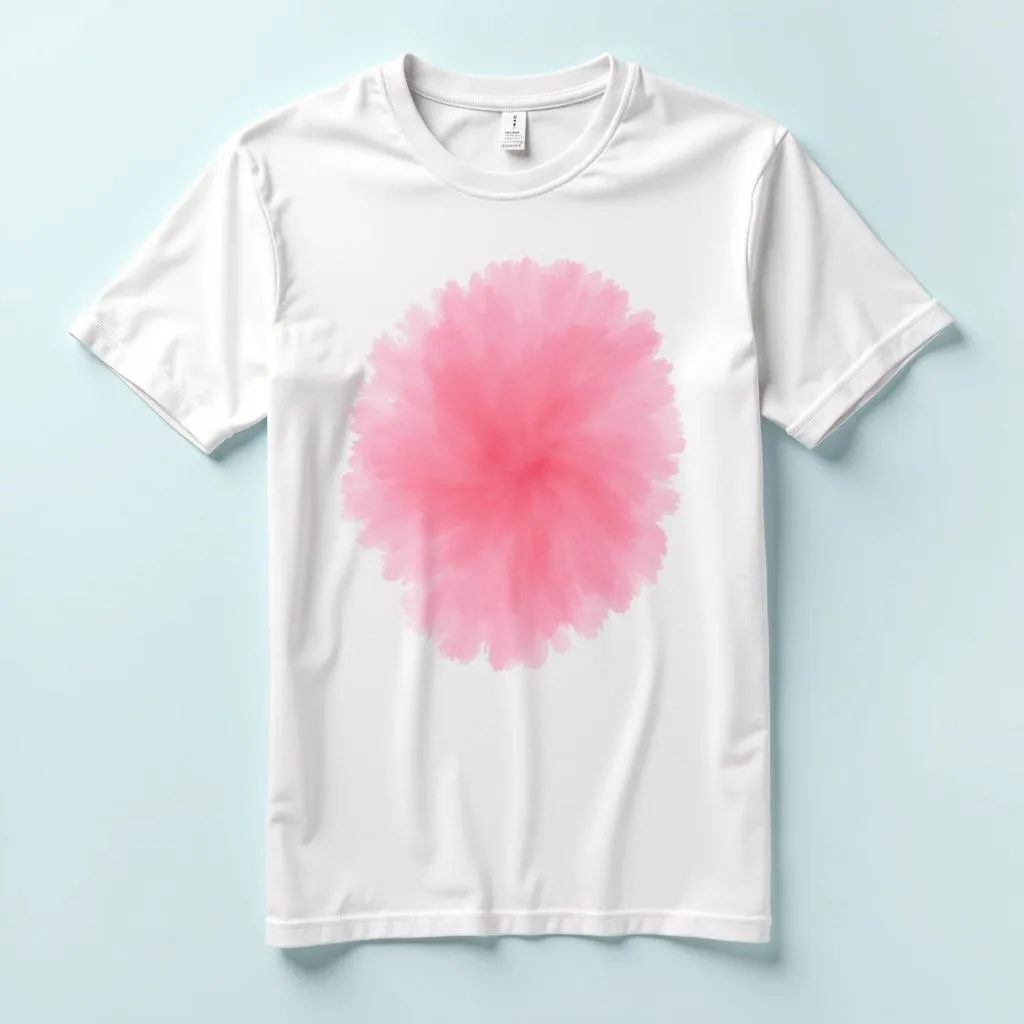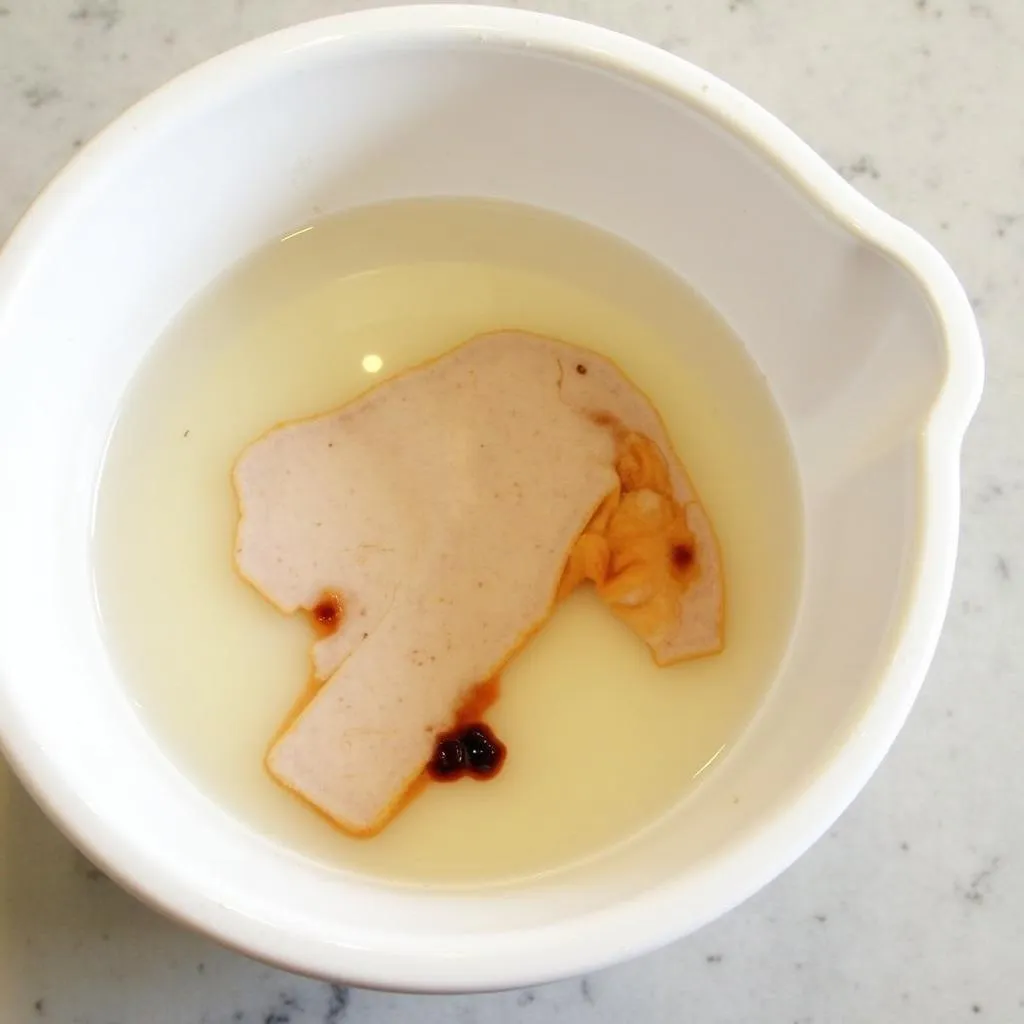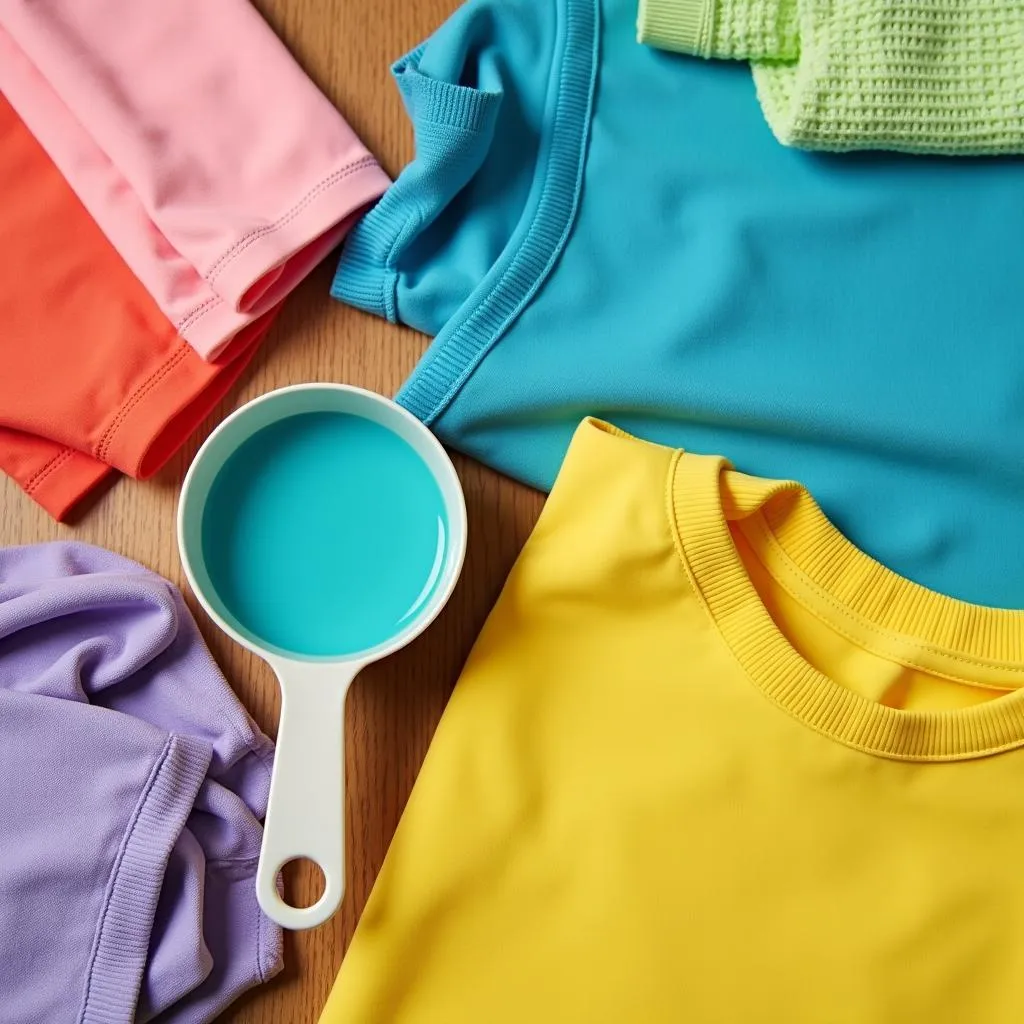Discovering a splotch of unwanted dye on your favorite shirt can be a frustrating experience. Color bleeding, the transfer of dye from one garment to another during washing, is a common laundry mishap. But don’t worry – it’s often fixable! This comprehensive guide will equip you with the knowledge and tools to tackle color bleeding effectively and salvage your clothes.
Understanding Color Bleeding
Before diving into solutions, let’s understand why color bleeding occurs. Some fabrics, especially brightly colored ones, have unstable dyes that tend to release excess color when exposed to water and detergent. This is especially common with new garments that haven’t been through multiple washes. Heat can also exacerbate color bleeding, which is why it’s crucial to wash colors in cold water.
 Color Bleeding on White Shirt
Color Bleeding on White Shirt
Act Fast: The Key to Success
When it comes to color bleeding, time is of the essence. The longer the dye sits on the fabric, the harder it becomes to remove. So, the moment you notice color bleeding, take action!
- Don’t let it dry: Avoid putting the affected garment in the dryer, as heat will set the stain.
- Separate and rewash: Immediately separate the discolored item from the rest of the laundry. Re-wash the stained garment separately with a gentle detergent in cold water.
Effective Methods for Removing Bleeding Color
Here are some proven methods to remove color bleeding from your clothes:
1. White Vinegar Soak
White vinegar is a natural powerhouse when it comes to neutralizing dyes and removing stains.
- Fill a basin or sink with cold water.
- Add one cup of white vinegar.
- Submerge the affected garment completely and let it soak for 30 minutes to an hour.
- Rinse thoroughly with cold water.
- Launder the garment as usual.
Pro Tip: For stubborn stains, create a paste using baking soda and white vinegar. Apply it directly to the stain and let it sit for 15-20 minutes before rinsing and washing.
 Clothes Soaking in White Vinegar
Clothes Soaking in White Vinegar
2. Commercial Color Remover Products
Several commercial color remover products are specifically designed to tackle dye transfer.
- Choose a reputable brand and carefully follow the product instructions.
- Test the color remover on an inconspicuous area of the garment first to ensure it doesn’t damage the fabric.
A word of caution: Commercial color removers can be harsh, so always use gloves and work in a well-ventilated area.
3. Oxygen-Based Bleach
Unlike chlorine bleach, oxygen-based bleach is color-safe and effective in lifting out dye stains.
- Fill a basin or tub with lukewarm water.
- Add the recommended amount of oxygen bleach according to the product instructions.
- Soak the garment for at least four hours or overnight for best results.
- Rinse the garment thoroughly and wash as usual.
4. Dish Soap and Hydrogen Peroxide
For a DIY stain-fighting solution, combine the power of dish soap and hydrogen peroxide.
- Create a mixture of one part dish soap and two parts hydrogen peroxide.
- Apply the mixture directly to the stain, gently rubbing it in with your fingers or a soft brush.
- Let it sit for about an hour.
- Rinse the garment thoroughly with cold water and launder as usual.
Preventing Future Color Bleeding
Prevention is always better than cure! Here are some proactive measures to prevent color bleeding in your laundry:
- Sort your laundry diligently: Always wash colors separately from whites.
- Wash new clothes separately: New garments are more prone to bleeding, so wash them individually for the first few washes.
- Turn clothes inside out: This helps minimize friction during washing, reducing the likelihood of dye transfer.
- Use cold water: Hot water can cause dyes to bleed, so opt for cold water washes whenever possible.
- Don’t overload the washing machine: Overcrowding the washing machine prevents clothes from rinsing properly, increasing the chances of color bleeding.
 Laundry Detergent and Colorful Clothes
Laundry Detergent and Colorful Clothes
Conclusion
Color bleeding doesn’t have to spell disaster for your favorite clothes. By understanding the causes and implementing the right techniques, you can effectively tackle this common laundry problem. Remember to act quickly, choose the appropriate removal method, and follow preventive measures to keep your clothes vibrant and stain-free. For further assistance on laundry care or any color-related query, feel free to check out our other helpful articles: how to fix color bleed clothes, how to wash new clothes without colors running, will colors bleed on cold wash.
FAQ
Can I use chlorine bleach to remove color bleeding?
It’s best to avoid chlorine bleach as it can worsen the problem and damage the fabric. Opt for color-safe alternatives like oxygen bleach or white vinegar.
Is it possible to remove color bleeding from delicate fabrics like silk or lace?
Delicate fabrics require gentle treatment. It’s best to consult a professional cleaner experienced in handling delicate garments for color bleeding issues.
Why do my clothes still bleed after multiple washes?
Some fabrics, especially those with low-quality dyes, may continue to bleed even after several washes. Using color-catching sheets during laundry can help absorb excess dye.
Can I prevent color bleeding by washing clothes in hot water?
Hot water can actually exacerbate color bleeding. Always wash colors in cold water to minimize dye release.
What should I do if I accidentally dried a garment with color bleeding?
If the stain has set due to heat, it becomes much harder to remove. You can try the methods mentioned above, but success is not guaranteed.
Are there any natural alternatives to commercial color removers?
Yes, white vinegar, baking soda, and lemon juice are effective natural alternatives to commercial color removers.
How can I prevent color bleeding when washing a mixed load of colors?
If you must wash a mixed load, use color-catching sheets and turn clothes inside out to minimize dye transfer.
Need help with stubborn color bleeding? Don’t hesitate to contact us. Call us at 0373298888, email us at [email protected], or visit us at 86 Cầu Giấy, Hà Nội. Our team is available 24/7 to assist you!
